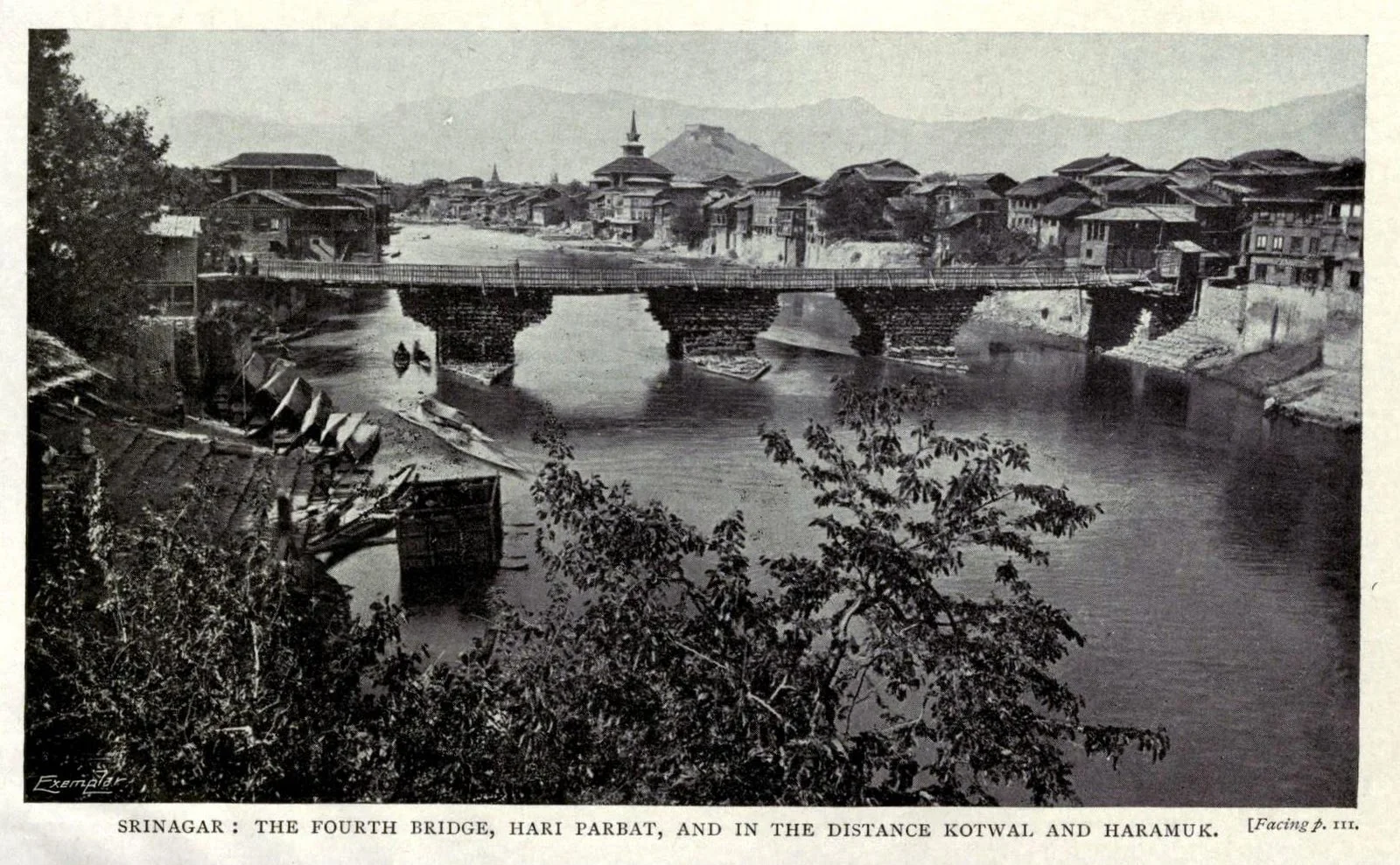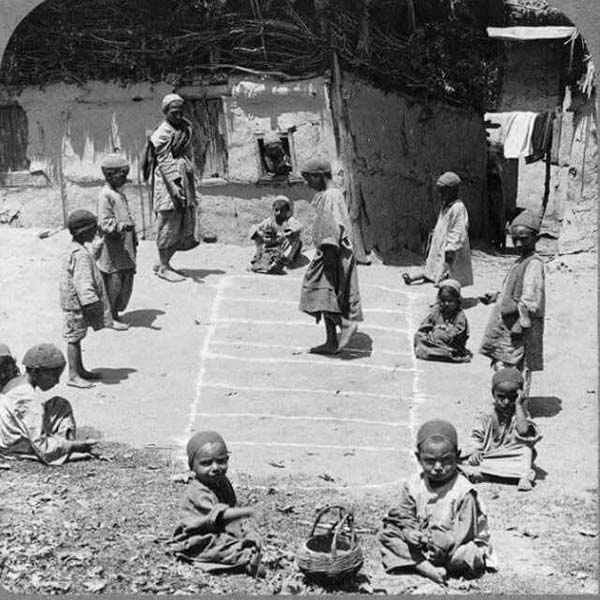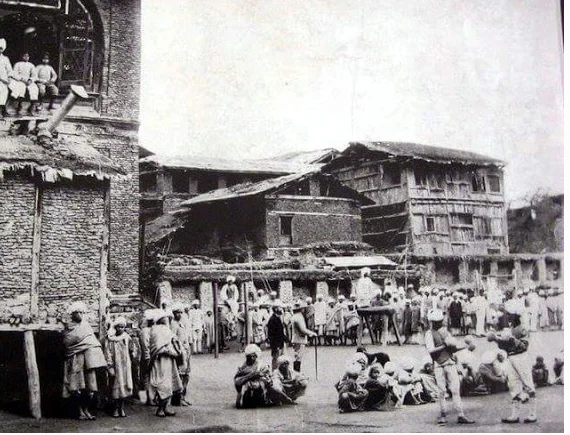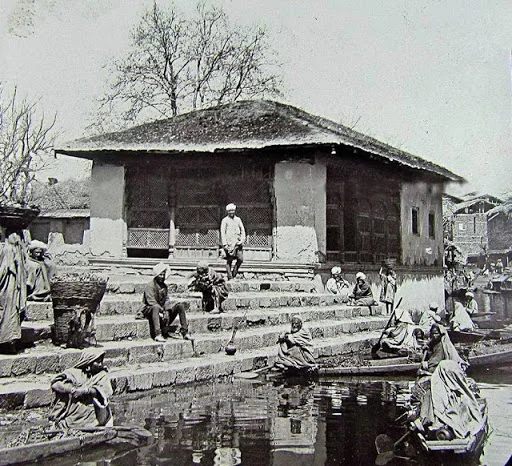
When plague commenced in Kashmir from a crime in early 1900, it created a chain of fascinating twists and turns in valley’s epidemic history. Many such stories are now emerging as folktales in the locked down region.
Showkat Ganai
When an ‘influential’ woman pilgrim bypassed high security vigil at Srinagar Airport and subsequently became the first Covid-19 positive case in Kashmir on March 16, it reminded many of a veiled Kashmiri woman returning from a plague-ridden Rawalpindi on a tonga in 1903, and becoming the epidemic trigger in the valley.
Then, as now, Kashmir witnessed an emergency response to tackle an emergency situation. The contact tracing, quarantine quarters, the fear of community transfer were as much in vogue, as they are today.
But then, there’s something more intriguing about Kashmir’s plagued past which continues to fascinate people. Most of these stories have become the lockdown folklore in Kashmir now.
That Mythical Spider
As first epidemic record of Kashmir, Kalhana’s Rajatarangini talks about Luta, a Sanskrit word for spider during the time of Jayapida (779-810 AD).
Luta-disease, writes Dr MA Stein in his translation of Kalhana’s treatise, was “contagious and fatal”.
But how did that spider become the epidemic epicenter is something which Rajatarangini doesn’t explain beyond a point.
However, Kalhana’s claim is being challenged by medical science today, as it believes that spider-bite is unlikely to cause epidemic disease like plague.
The Killer Grass
During the reign Mughal Emperor Jahangir, the outbreak of plague in 1615 had killed many Kashmiris.
One day, Jahangir writes in his Kashmir Memoirs, a dead body was thrown on grass.
“It chanced that a cow came and ate some of the grass,” the emperor notes. “It died. And some dogs that had eaten its [cow’s] flesh also all died.”
Things had come to such a pass, Jahangir notes, that due to fear of death, fathers would not approach their children, and children would not go near their fathers.
‘A Strong Wind of Destruction’
In the summer of 1892, Kashmir witnessed the worst cholera epidemic, killing 5,781 persons in Srinagar, and 5,931 in villages.
It came be known as “Wobah” in Kashmiri.
Kashmiri name of cholera, or any other epidemic, is the same what Abul Fazl, the grand vizier of the Mughal emperor Akbar, and author of the Akbarnama, means by his words, “a strong wind of destruction” that had earlier unleashed massive death in “Hindustan”.
This fatal wind in the form of the last famine, 1878-79, alone killed three-fifth of the population from the valley.

Circle and Burn
When plague struck Kashmir in 1615, Emperor Jahangir was told that 3000 houses bearing three circles burnt and ended the epidemic.
But the emperor called it a strange affair in his memoirs.
“It certainly does not agree with the canons of reason,” he wrote, “and my intellect cannot accept it.”
A Tonga Traveller
In 1901, as plague spread, medical examination of all visitors before entering Kashmir was made mandatory by the British Resident in Srinagar.
As nearby Rawalpindi and Jammu had become epidemic hotbeds, the examination was being done to keep plague away from Kashmir Valley.
It kept the valley safe, until a veiled and influential woman came from plague-ridden Rawalpindi on a tonga along with her two servants on November 13, 1903, and passed through the check post.
Five days later, one of her servants, Ghulam Mohammed, was found at the gate of State Hospital in Srinagar with symptoms suggesting plague. He was quickly quarantined in a tent away from city.
“He had been severely ill before coming from Uri and staying at the house of Subhan Bhat, a landlord relative of the woman, living at Kralpura,” Dr. A. Mitra, a Bengali-man, the then Chief Medical Officer Kashmir writes in The Indian Medical Gazette.
At Bhat’s place, the servant’s health deteriorated and was brought to the hospital by another servant. A day after, Ghulam Mohammed became the first dead case of pneumonia plague in Kashmir.

Torched House
Soon, a group of coolies were vaccinated and engaged for disposal of dead and disinfection work. They buried Ghulam Mohammed’s body in a 10 feet deep grave with 2 feet of carbonate of lime surrounding it. All of his articles were burnt.
Soon, Subhan Bhat’s house was also burnt along with the grains kept in the compound of the house by various dealers.
The woman, her other servant, and all members of Bhat house, the pony-man who brought the patient to the hospital, and all suspected contacts were quarantined in another camp.
An Erring Cop
Four cops posted to guard the tent where the body of patient was kept were strictly instructed not to go inside. But one of them soon died of plague. Despite his family protest, his body was buried in a deep grave.
The dead cop in connivance with his healthcare worker brother, the investigation later revealed, had gone into the tent to steal things from the body.
Some say he put his mouth on the finger of the deceased to bring out a ring, biting it with his teeth.
“If this story is correct,” writes Mitra in his report, “[then] plague commenced in Kashmir from a crime.”

A Plague on Both Your Houses
Soon, news came about death of several persons in two houses in Srinagar.
The first house belonged to the deceased cop, where two persons died. And the second one was the house of another cop who had visited the first house. Five people had died there.
Nobody was sure how did this community transfer began.
“There’re two possible explanations here,” Mitra writes. “Either the relatives of deceased policeman had exhumed his body and reburied it at native place or they had found his hospital attendant brother who possibly died at Geru village and subsequently buried by the family in their locality.”
Death on the Run
The dead cop’s health worker brother who had escaped quarantine had somehow reached village Geru. He soon died there, but not before becoming a super-spreader of infection.
Among his victims were the village headman and his three sons. Mourners from many villages participated in their funeral and returned home carrying back infection.
“Till the news reached to me,” Dr Mitra writes, “nobody survived in the village to tell the true story.”
Follow this link to join our WhatsApp group: Join Now
Be Part of Quality Journalism |
Quality journalism takes a lot of time, money and hard work to produce and despite all the hardships we still do it. Our reporters and editors are working overtime in Kashmir and beyond to cover what you care about, break big stories, and expose injustices that can change lives. Today more people are reading Kashmir Observer than ever, but only a handful are paying while advertising revenues are falling fast. |
| ACT NOW |
| MONTHLY | Rs 100 | |
| YEARLY | Rs 1000 | |
| LIFETIME | Rs 10000 | |











